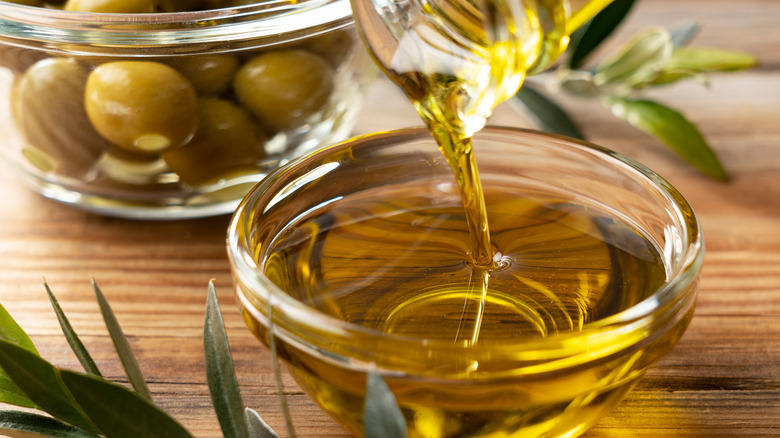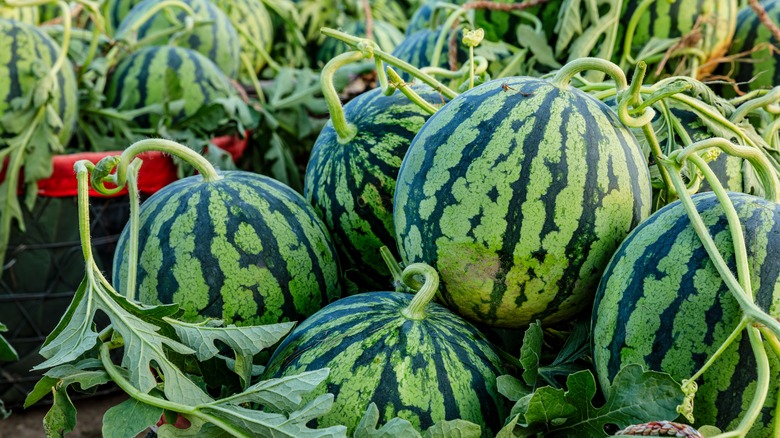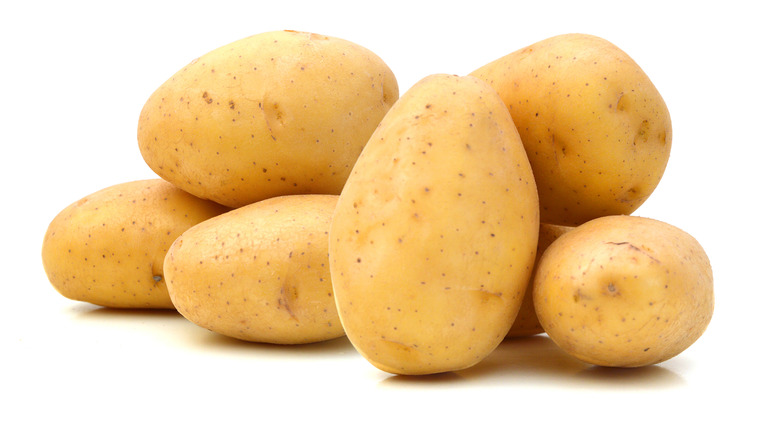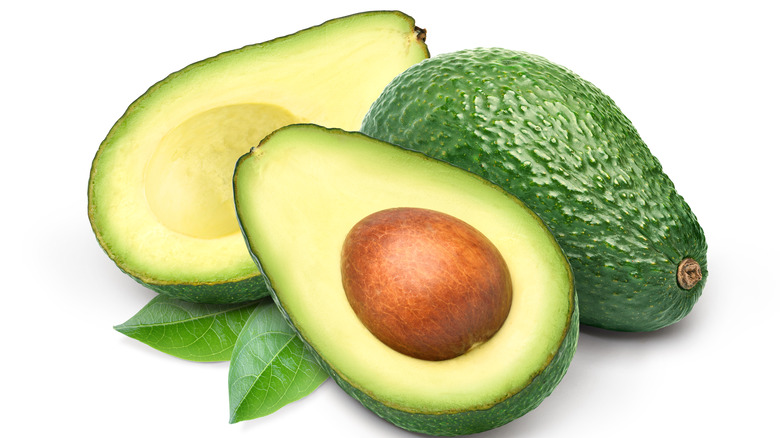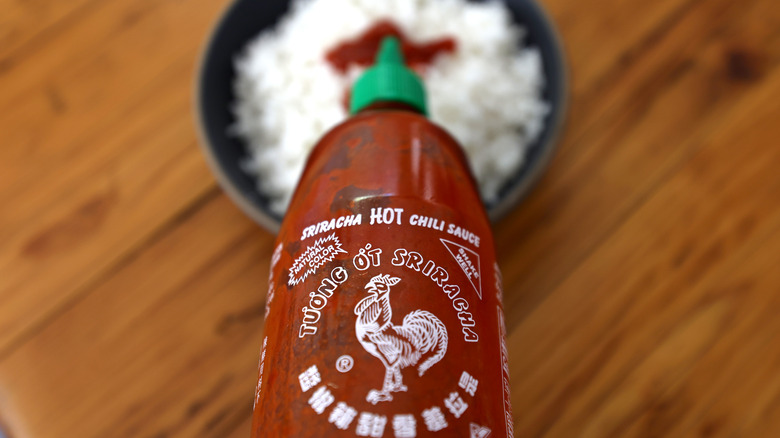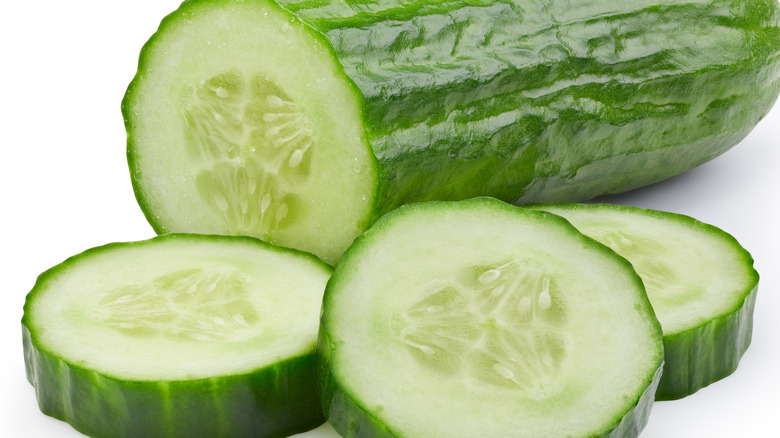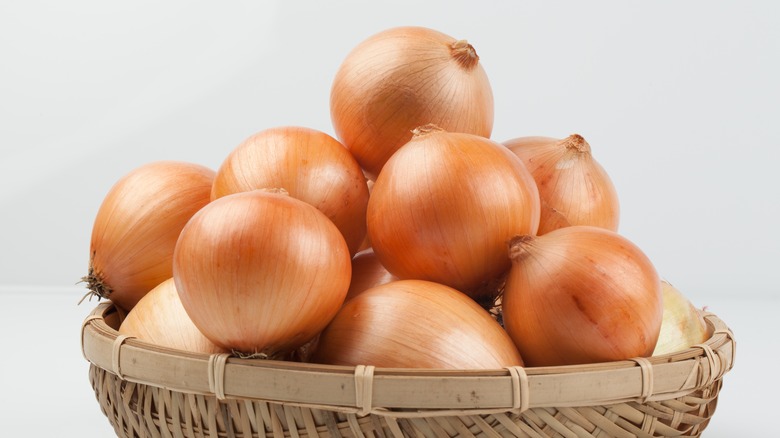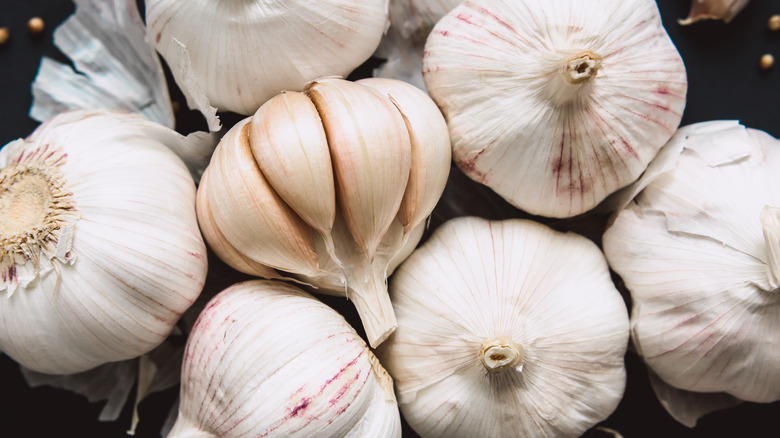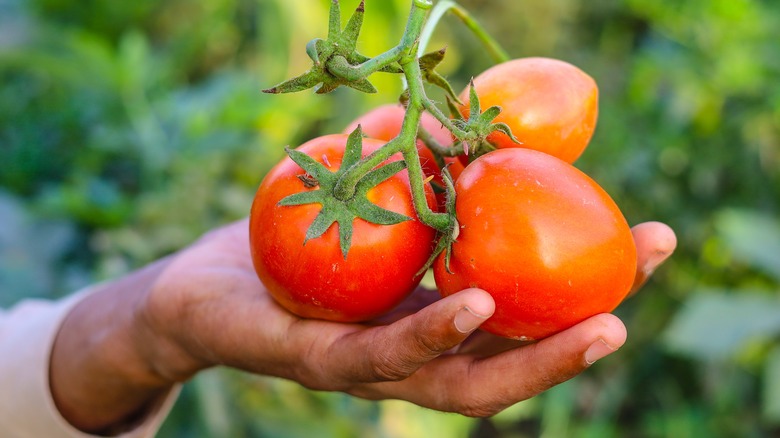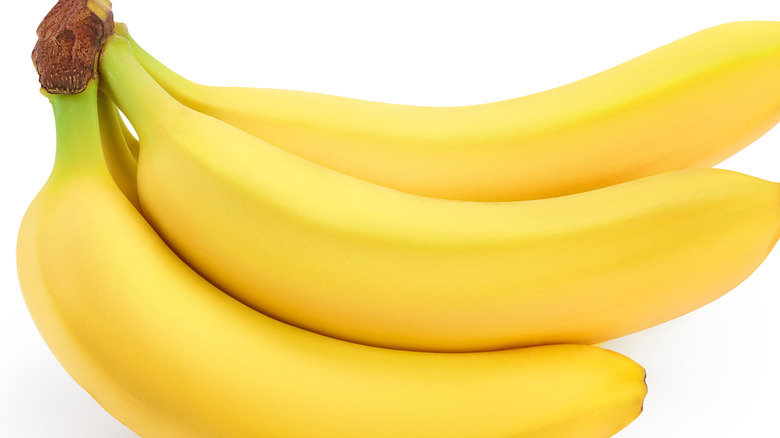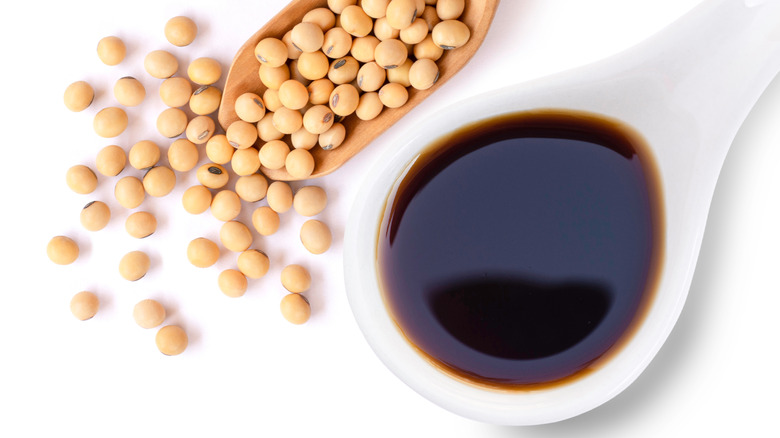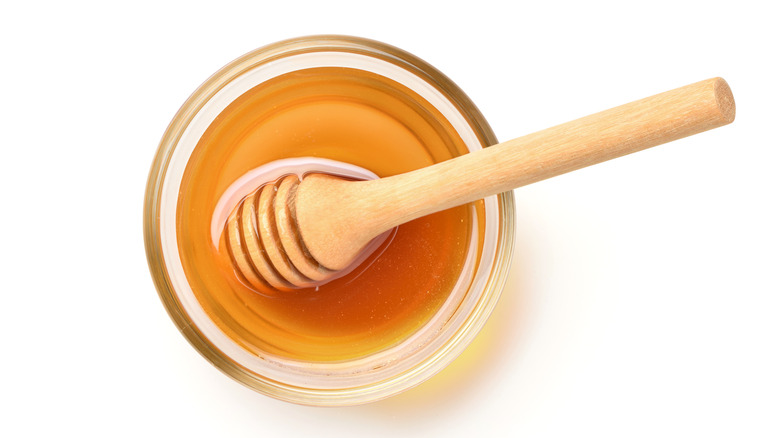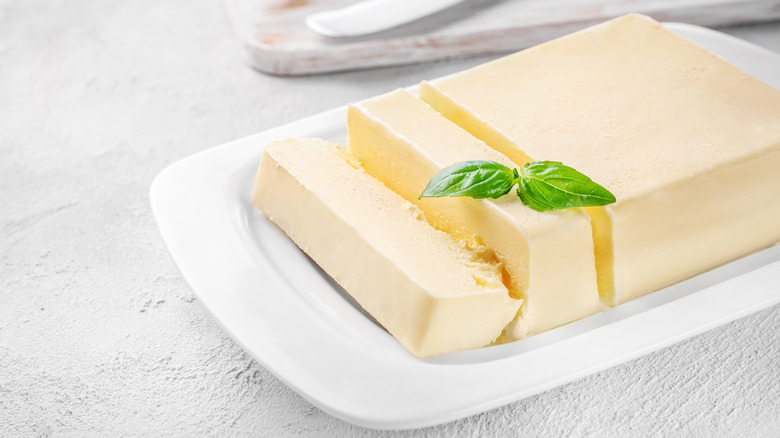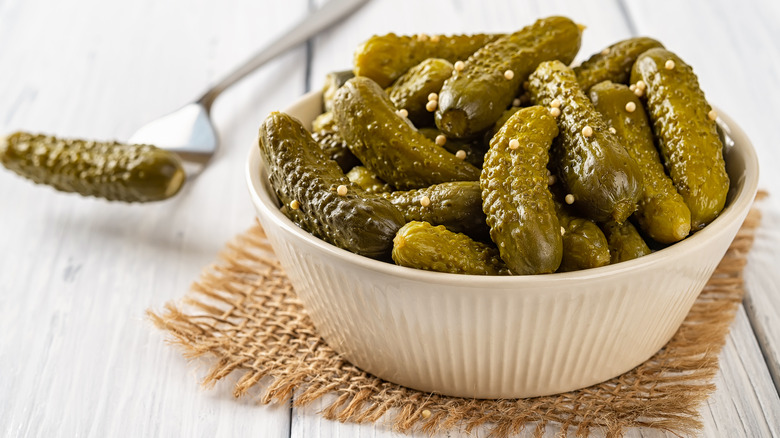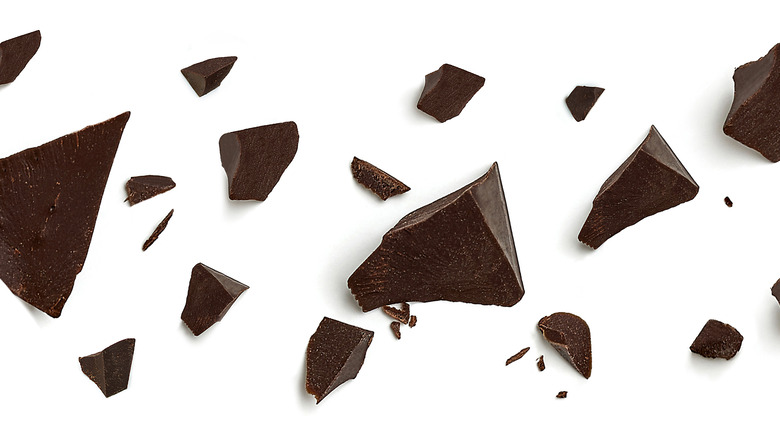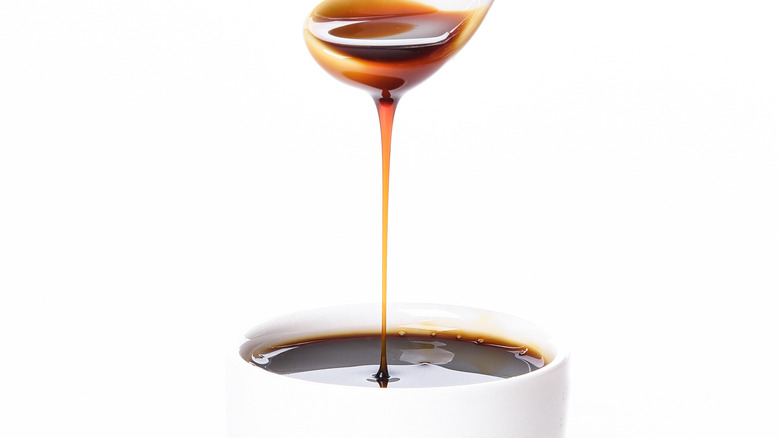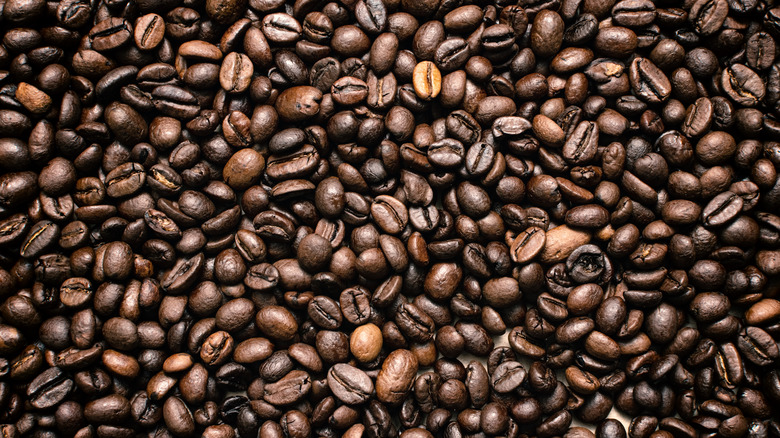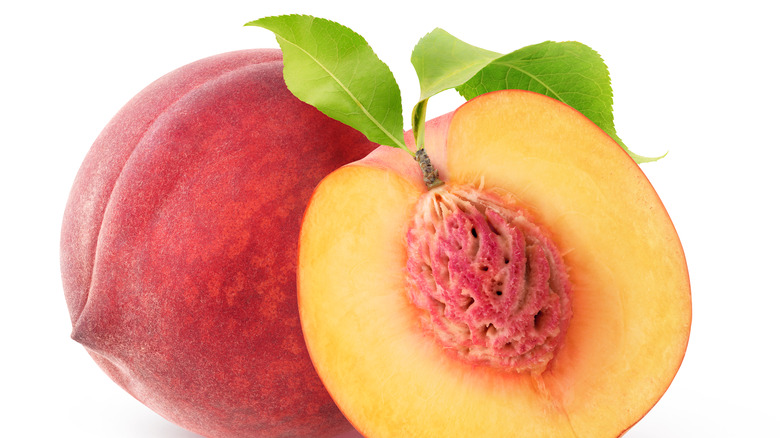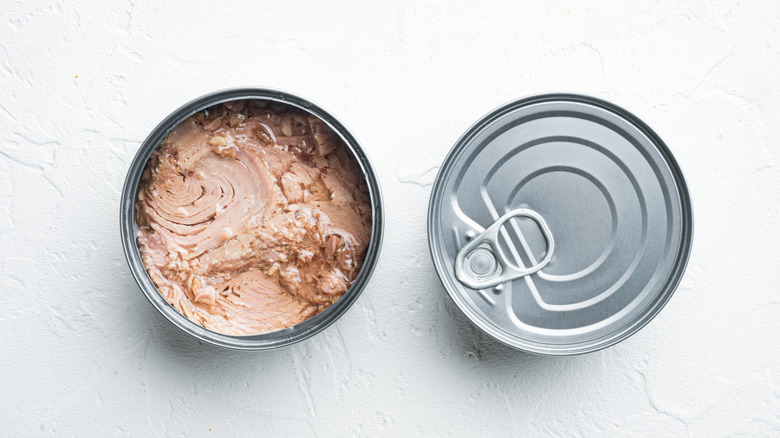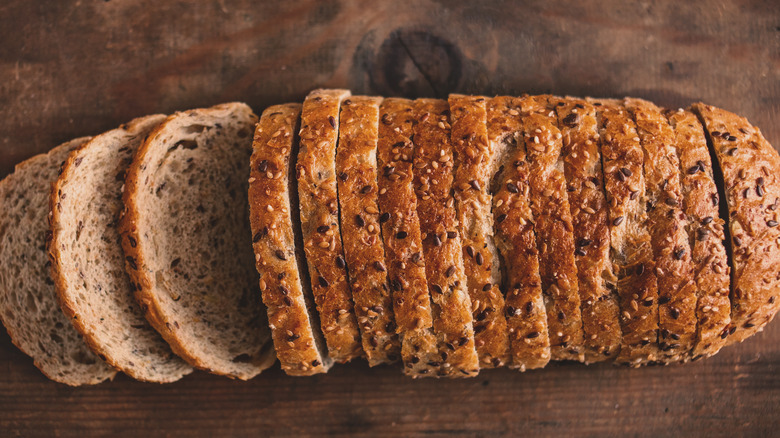Foods You Should Never Refrigerate
When you consider the most important inventions of all time, you might first think of vaccines, the light bulb, the internet, and our favorite — refrigeration.
Refrigeration was a vital technology for the preservation of food and the development of the home kitchen. The refrigerator was developed for commercial use in the 1850s but was popularized by General Electric's (GE) monitor-top refrigerator in 1927. According to CNN, nearly 100% of American homes now have a fridge, while 23% of homes have two or more refrigerator units.
Despite refrigerators being so popular worldwide, you'd think there would be a clear distinction between what foods should be stored in a fridge and what should not. Storing foods in your fridge, even when you've decided on the perfect temperature to set your refrigerator, can not only alter the taste and texture of the food, but in many cases, it can make the food unusable or unsafe for the home cook. Here are some of the foods you should not store in your refrigerator.
Oil
Cooking oils, including olive oil, sunflower oil, and canola oil, are essential ingredients for sautéing, baking, and frying. However, a lot of things can happen if you refrigerate cooking oil. Naturally, the different fat levels in these oils will alter the preferred storage method. According to Delighted Cooking, the only types of oils stored in the refrigerator should be those with high polyunsaturated or monounsaturated fats. Safflower oil, for example, will keep at room temperature for up to two years or in a refrigerator for a much shorter six-month window.
High saturated fat oils, including lard, palm oil, and coconut oil, should be stored at room temperature and in a dark place. Light infiltration will alter the oil's quality, so we recommend leaving it in your cabinet. Similarly, olive oil has the potential to harden when placed in a refrigerator, so it is recommended to place the bottle in a cool, dry place in the kitchen rather than in the fridge.
Whole melons
This next tip is shocking, and you may be thinking to yourself, "why in the world is it a bad idea to refrigerate watermelon?" Watermelon should only be placed in the refrigerator under two conditions: if it has already been cooled (like the chunks pre-packed at the grocery store) or if it is cut. A whole watermelon in the fridge not only takes up a lot of space but can also negatively impact the taste, texture, and color of the fruit. Studies by the USDA's Agricultural Research Service revealed that refrigerating whole watermelons causes a loss of antioxidants that were not observed in watermelons left out at room temperature. Instead, leave your uncut watermelon on your kitchen counter for up to ten days — or until you are ready to slice it.
Accordingly, this applies to a lot of summer fruit, and you might consider this among the melon refrigeration rules you should never break. Whole cantaloupes can also be left out at room temperature for a few days. If your cantaloupe is not fully-ripe at the time of purchase (distinguished by a green rind), leave it on your counter for one to two days before slicing. You'll know your cantaloupe is ripe when the rind yellows. After cutting, store in the refrigerator for up to three days.
Raw potatoes
Raw potatoes are best kept away from the refrigerator. Like other root vegetables, including turnips and carrots, the potato can last up to three months stored in a cool dark pantry at around 50 F or root cellar.
The fridge is much too cold for the potato, and a few different things can happen if you refrigerate raw potatoes. When the potato is too cold, it begins converting starches into sugars; this leads to discoloration of the potato's exterior as well as a notably off-putting texture. Some research indicates that storing potatoes in a refrigerator also leads to the release of acrylamide during the cooking process. This chemical is known to the Food and Drug Administration to cause cancer in lab animals.
According to Idaho Potatoes, peeled potatoes can be left covered in water in the fridge for 24 hours. Home cooks should also place cubed peeled potatoes in water and refrigerate them. The water will slow the peeled potatoes' natural darkening process and keep them fresh for when you use the potatoes next.
Unripe avocados
Picking the perfectly ripe avocado at the grocery store can be like winning the lottery. But for most avocado fans, buying avocados at the store means strategically planning your meals around when the avocado will ripen enough for guacamole or avocado toast. Leaving the avocado on your counter is the best way to cause the fruit to ripen; however, leaving it in the fridge only slows down the ripening process. Once the avocados are ripe, the fridge can then become one of the best ways to keep avocados fresh so long as you place the fruit in the crisper drawer. The low-humidity environment will keep the avocado in top conditions a few days longer than plopping it in the center of the fridge.
In early 2022, a viral avocado storage hack took the internet by storm when Lisa Couch Williams' FaceBook page suggested submerging ripe avocados in water in the fridge for up to four weeks to keep the fruit fresh. However, not only is this hack unnecessary, but it can also be dangerous. Listeria and salmonella bacteria (which can be found on the surface of avocados) can multiply in water and potentially contaminate food. Instead, store ripe avocados in the fridge — no water involved.
Hot sauce
Condiments are at the center of the fridge-or-no-fridge battle, leaving people to ponder if you really need to refrigerate hot sauce, for example. Hot sauce contains high levels of salt and acid — both of which work against foodborne bacteria that can make us sick. The peppery ingredients also make hot sauce a hostile living space for pathogens, so the risk of a foodborne illness from hot sauce is highly unlikely.
There is variation in the estimated hot sauce shelf life. According to Southern Living, Cholula hot sauce lasts six months in a dry place, while Louisiana hot sauce can last as long as five years. Although these brands do not require refrigeration, refrigerating has some benefits, including a better color. But, the Food Network notes that the hot sauce flavors are more pronounced when the sauce is at room temperature. Condiments containing mayonnaise, eggs, or dairy must be refrigerated after opening. You should refrigerate homemade hot sauces or those containing an oil base as well in order to keep foodborne pathogens at bay.
Cucumbers
Although there is quite possibly nothing better than iced cucumber water, cucumbers and cool, moist conditions don't mix well. The damp conditions of the refrigerator can cause even the most pristine cucumbers to grow into a moldy, soppy mess.
The most important step you can take when learning how to store cucumbers is to dry the cucumber off very well before placing it into an airtight bag or container. These whole cucumbers should stay fresh for about a week. If your cucumbers are sliced, the best preservation method is to drop the slices into fresh water in an airtight container. The slices can be left on the counter for a few days without drying. If you absolutely need to store your cucumbers in your fridge, there are three spots you should keep these veggies: in the crisper drawer, on the door, or towards the front. This will prevent the cucumber from freezing and dramatically altering the vegetable's texture.
Onions
Alliums, in general, do not do well in the fridge. What happens if you refrigerate onions? Storing onions in the fridge exposes this allium to a cold, humid environment. This can cause premature moldiness, smelliness, softness, and overall gross-ness. Instead of adding onions to your fridge, try storing the root in a dry cabinet at a temperature around 45 and 55 F. At this temperature, onions will last a good two to three months. Onions that are already pre-sliced, chopped, or minced should be placed in the refrigerator and used soon after.
Scallions (green onions) are one of the only deviations from this rule. To keep scallions fresh, place the stalks in a cup with at least one inch of water and cover with a plastic bag. You should change the water in the cup once it gets noticeably murky. This will keep your scallions fresh for several days after purchase and can also be used to re-grow the stalks after being cut.
Garlic
Garlic bulbs are a central component in many different cuisines. Although you might think adding the allium to the fridge will keep the bulb fresh for longer, it's a bad idea to refrigerate garlic. Refrigeration can lead to premature sprouting in the cloves and result in an unusable bulb. Whether you prefer the long-neck garlic or the short-neck garlic, you should universally avoid the refrigerator.
Several studies have indicated that storing garlic in the fridge can cause sprouting twice as fast as garlic stored at room temperature. Although sprouted garlic is safe to eat, its sharp and bitter flavor is not ideal for most dishes or palates. Instead of storing garlic in the refrigerator, leave the whole bulb at room temperature for up to six months. Individual cloves of garlic will only last ten days due to oxidation. Keeping your garlic in a well-ventilated space is another way to increase its longevity; store whole cloves in a mesh produce bag or garlic keeper to reduce the risk of molding.
Tomatoes
Like other foods on our list, it's clear that the cold is a flavor killer. That's also true for the relationship between tomatoes and the cold crevasses of your refrigerator. According to a cold produce study of tomatoes in the refrigerator, exposing tomatoes to cool temperatures alters the texture and flavor of the fruit dramatically. Suppose the tomato is already refrigerated before purchase, such as those pre-ripe fruits from warm Florida and California climates. In that case, the fruit will likely be ready to eat by the time it arrives at your local grocery store.
According to Food52, storing tomatoes stem-side-down can prevent moisture loss since most moisture from the tomato escapes via the stem. If you need to store a cut tomato, the website recommends covering the cut end and leaving the piece in your refrigerator for no more than two days. If you're using a chilled tomato for a recipe, always allow it to come back to room temperature before cutting and adding it to a dish.
Bananas
Bananas are grown in the tropics, which is far different from an average refrigerator's climate. It is one clear fruit that should never touch the hallowed drawers of a home fridge. Many things can happen if you refrigerate bananas, and very few of them are good.
Warm, damp conditions will cause the bananas to ripen rapidly; this (along with the production of ethylene gas trapped in the bag) is the reason why many home cooks ripen green bananas by placing the bunch in a sealed bag for a few days. If your banana is at the perfect stage of yellow, either act fast and eat it or store the fruit in your refrigerator. Just don't be surprised when brown spots appear in a matter of days.
Peeled bananas brown in the refrigerator due to oxidation. To slow the oxidative process, coat the fruit in lemon juice (you can do the same for apples). If you want to preserve the banana for more than a month, try peeling it and freezing it. This makes the perfect smoothie banana and reduces food waste!
Soy sauce
Soy sauce is a fermented seasoning liquid common in many Asian dishes. Soybeans are inoculated with a mold into koji before being fermented and strained into the familiar liquid that an estimated 44% of U.S. consumers use every day, per a study published in Food Science and Biotechnology.
Since soy sauce is already fermented, it is at low risk of pathogen transmission, meaning you don't have to refrigerate soy sauce. The fermentation process is completed in a hostile environment without oxygen and tons of salt; this does not lend well to pathogens seeking a home. Therefore, consumers can refrigerate soy sauce as a matter of preference, but it is unnecessary.
At room temperature, sealed soy sauce does not have a clear expiration date. Once opened, the liquid is good for between two and three years — although we think you'll use most of it by then. The first month will have the most pungent flavor, according to Kikkoman. Monitor regularly for mold and an odd odor once the first month passes.
Honey
Honey is a distinctively sweet ingredient used in baking or stirred into teas. There are also some uses of honey as a medicine! No matter what you use honey for, you'll be happy to know that this sweetener has a low-key preservation requirement. Honey should be kept in a cool — not cold — location out of direct sunlight. Store honey in a tightly sealed container, like the bear-shaped jars it's often sold in, or a Mason jar.
If stored correctly, honey has an indefinite shelf life. Since honey is naturally very acidic (thus antibacterial), many pathogens will avoid colonizing it. Honey also has a high amount of natural sugars, which prove no use for foodborne illnesses.
Refrigerated honey is by no means dangerous — just difficult to work with. Of the things that happen if you refrigerate honey, cold temperatures will speed up the crystallization process and result in a sludgy consistency. If you find your honey has begun to crystalize, submerge the container in hot water. However, repeated exposure to heat can damage the honey's taste, texture, and nutritional qualities, so submerge in water infrequently.
Butter
Although it might seem intuitive to place butter in your refrigerator, wait until you hear this. You can store butter on the counter for between one day and a whole week!
The reason for this is that most commercial butter has already gone through pasteurization to kill off bacteria and pathogens. Additionally, the high-fat content (almost 80%) and low water content are relatively uninhabitable for pathogens looking to make butter-lovers sick. However, monitoring for butter that has turned rancid at room temperatures is important. Avoid storing the butter in direct light and air to prevent it from getting malodorous.
Instead, store butter at room temperature in an air-tight container like a French butter crock to prevent your butter from smelling (and tasting) like your kitchen. This device essentially stores the butter in water, protecting it from the air moving around in your kitchen. Butter can last in one of these butter crocks for almost a month.
Unopened pickles
Pickles are the perfect snack to always have in your kitchen. The presence of salt and vinegar in the pickle brine is not favorable for foodborne illnesses, so these veggies do not need to be refrigerated. You can store an unopened jar of unrefrigerated pickles on the counter at room temperature, out of direct sunlight for up to two years (even past the "best by" date).
Once the pickle jar is opened, you run the risk of spoilage. Opened jars of pickles should be kept covered and submerged in brine for no more than three months. The pickles will become sourer with age. This does not create a dangerous situation for consumers but can make pickles less enjoyable. You can also help slow the molding and spoilage process of your pickles by using tongs or gloves to remove the pickles you plan to eat from the jar.
If you leave an opened pickle jar on the counter overnight, it isn't that big of a deal. Simply place the jar back in the fridge as soon as you can. With all foods, regularly inspect the jar for mold and throw out pickles that are obviously too far gone.
Chocolate
There is a simple reason you should never keep chocolate in the fridge: it is definitely not as tasty when it's cold! Chocolate is very susceptible to condensation from the temperature changes in your refrigerator. Since condensation causes the chocolate to produce tiny sugar crystals on its exterior, refrigerated chocolate will show a tiny white layer of crystals called a sugar bloom. Even if the appearance doesn't bother you, the taste of the chocolate might.
Instead of storing chocolate in the fridge, store chocolate in a dark environment in a cabinet. Milk chocolate can last about a year, while dark chocolate can last around two years. The one exception for refrigerating chocolate would be if your kitchen gets above 82 F; if you absolutely need to refrigerate your chocolate, place it in an airtight container first. This will prevent your chocolate from absorbing the smells and tastes of everything else crammed into your fridge.
Aged dry cheese
You've likely seen jars of parmesan in the pasta aisle at the grocery store and thought, "are you sure that's cheese?" Even though we think all dairy products need to be refrigerated, aged cheese like parmesan and romano does not need to be placed in a cold fridge. According to the USDA, placing these cheeses in the fridge will prolong the shelf-life, but it is not necessary for food safety. Hard processed cheese, like cheddar and the dreaded American, do not have to be refrigerated either. If you have to store these cheeses, Vince's Meat Market recommends wrapping the cheese in foil or food-grade paper and placing the block in a cool, dark place until you're ready to serve it.
Soft cheeses like brie, mozzarella, and feta must absolutely be placed in the refrigerator and are safe one to two weeks after opening. Soft cheeses are high-moisture and subject to spoilage quicker than hard cheeses.
Molasses
Molasses is an illusive ingredient used in cookies, baked beans, and some bread recipes. According to Does It Go Bad?, molasses keeps as well as other popular sweeteners like maple syrup and honey. There is so much sugar in molasses that it is uninhabitable for many foodborne pathogens. Accidentally introducing the bottle to bacteria or mold may cause spoilage, so it is important to monitor opened containers for a distinct smell, visible mold, or peculiar taste.
Additionally, you should remember that the different types of molasses may have some variation in taste and smell, so you can open a new container to reference the profile of the older molasses. If properly stored, unopened containers of molasses could last up to a year, while opened containers can last around six months (via USDA).
Coffee
You may have heard the myth that coffee needs to be refrigerated to keep its taste and texture. Knowing where to store coffee is important to maintaining its quality. Although some coffee fans advocate for freezing beans for optimal taste, the constant opening and closing of the freezer can cause dramatic temperature changes that alter the flavor profile of the coffee. Moisture can also spoil coffee beans quickly. Instead, leave coffee beans in a dry spot in your pantry.
Ideally, your storage container should have a one-way valve to release carbon dioxide and oxygen from the coffee beans. This will preserve the beans for the longest period possible. If you need to store coffee beans for a longer time, you can freeze the coffee beans in individual portions to grind when you need a caffeine break. Grinding the beans with a similar texture and size will produce a more potent and balanced taste.
Peaches and nectarines
Peaches and nectarines are sold in dry bins at the farmers' market, so it is reasonable to expect that these stone fruits can be left out of the refrigerator. Actually, it's a bad idea to refrigerate stone fruit like cherries, peaches, and nectarines, as the cold can alter the flavor and texture of these fruits. Stone fruits ripen the best when left on the counter rather than in a cold refrigerator.
Some stone fruits, like cherries, especially do not do well with moisture. It is best to wash cherries before you are about to eat rather than washing the fruit and placing it back on the counter. Unfortunately, these soft fruits do not have a long shelf life. Ultimately, its best to use these fruits as close to the ripening point as possible.
Canned fish
Canned meat, including SPAM, tuna, anchovies, and chicken, are known for a long shelf life. These foods are filled with sodium and fat and sealed in a can to prevent the encroachment of unwelcome pathogens. Tuna, specifically, does have requirements for storage to maintain its freshness. You should really be storing tuna in a cool, dark pantry above the floor rather than in a low-temperature, moist fridge. If the can is bulging or the seal is broken, it is advised that you throw it out immediately, as bulging is a sign the tuna has gone bad.
Once canned fish has been opened, it is advised to place it in a sealed container in the refrigerator for up to four days. In addition, raw, fresh tuna should be used within a day of purchase or placed in the freezer for a maximum of 24 hours.
Bread
You might have heard that bread can be put in the fridge to maintain its flavor over time. However, it's a bad idea to refrigerate bread, as the appliance can cause a loaf to stale faster than leaving it on your counter. This is because the starches in the bread return to a crystalized state under cool temperatures — resulting in a hard, stale loaf.
If you purchase a loaf of sliced bread from the store, it is best to place the bread in an air-tight plastic bag. If you have a loaf of bread in a paper bag, like a baguette or Italian bread, wrap the loaf in plastic wrap or place slices in an air-tight bag to preserve the quality. Or, use the slices of bread for french toast or bread pudding to use up those slices before the use-by date!

